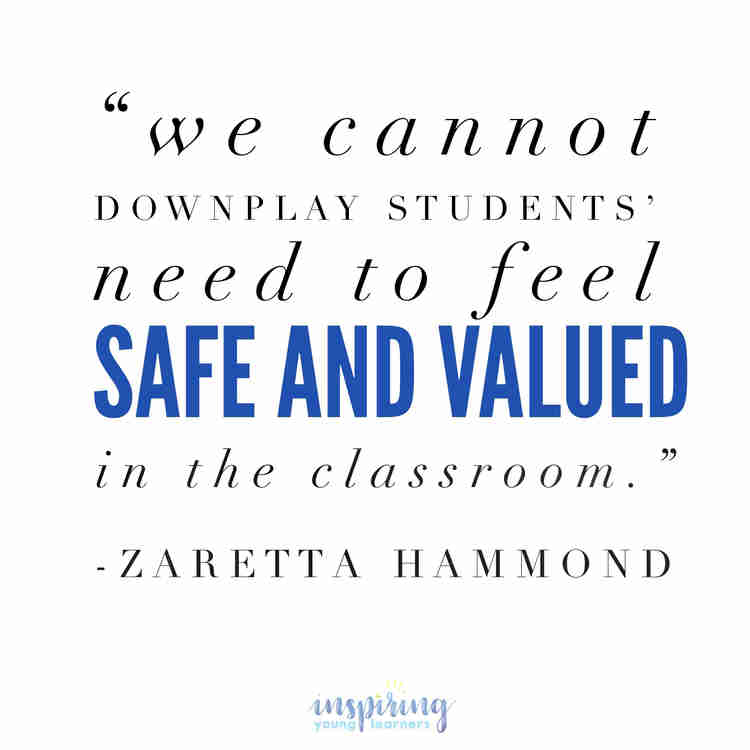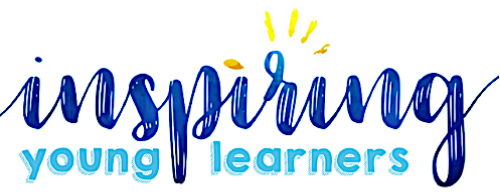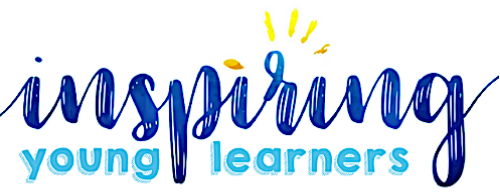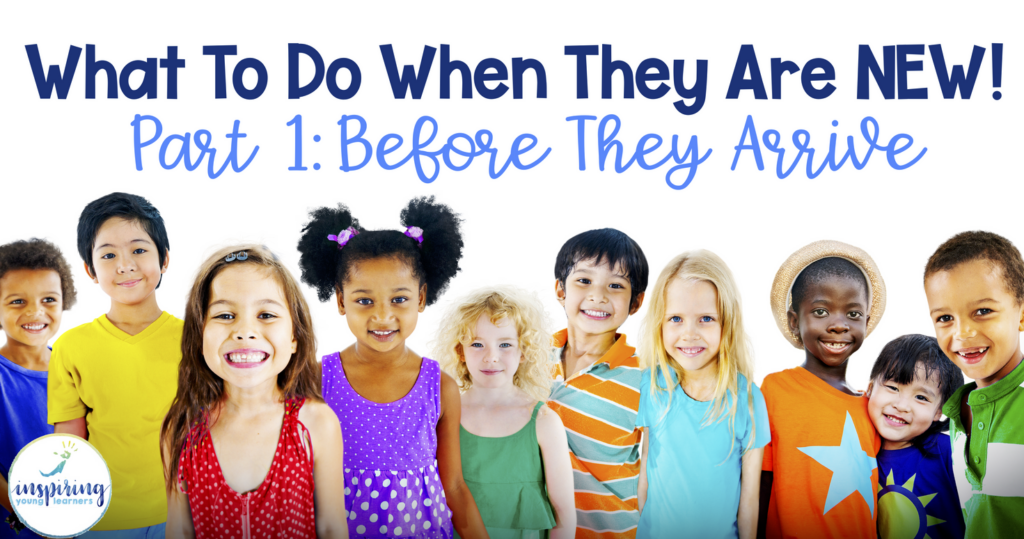I can still picture her face today… her name was Elizabeth, the same as mine, and we went to school together from elementary all the way through high school. If you asked me what else I knew about her, I sadly would have to say, nothing.
The thing was, this girl Elizabeth grew up in the bilingual program in our school, and truth be told, our school did a terrible job of integrating students into the mainstream classroom. Thankfully, culture is changing, and we are in the midst of being a part of a paradigm shift in our education system (some schools faster than others), and more inclusion models for ELLs are becoming more widely supported and encouraged! Thank goodness!
This is an exciting time, but also as a homeroom teacher, it can be very overwhelming to all of a sudden have a shift in the student population you are used to working with and teaching.
This series of blog posts have been created in hopes to help you feel confident and excited to empower and inspire your English Language Learners in your homeroom classroom. I have walked in your shoes… feeling completely overwhelmed and completely unprepared to know where to begin with Non-English students.
I’ve had to figure out how to support a student that just came from Bulgaria, as well as struggled to figure out strategies to make connections with students who had never had the experiences that our guided reading books were talking about.
I also have been in the place where I did receive training from our district on ways to support ELLs but could not figure it out once I was back in my own classroom. I have also been there where I was too embarrassed to ask other teachers or the administration for help because I should know this stuff!
If any of these situations apply to you, then you are in the right place, because I am going to walk you through all you need to know to be CONFIDENT supporting ELL students in the mainstream classroom. Today, we are going to begin by preparing yourself and your class to welcome ELL students. Whether it’s the beginning, middle, or end of the year, it is important to take some time to be reflective about yourself and to do a few simple things to create a solid connection with your ELL student right away. I get that you might be completely overwhelmed right now with the long list of items on your to-do list… I’m not trying to add more to your plate, I promise!
But I genuinely believe that the first few weeks of school for an ELL will make or break their educational journey.
I’m not saying this to put pressure on you, but instead telling this to show the importance of taking a few minutes to prepare for your newcomer, and if you do, it will reap a much better year for you and your student. (And don’t worry… I created a checklist of ideas for you, so you don’t have to come up with it on your own! I promise I’m here for YOU!)
Preparing Yourself: If you know anything about my story, you know that for the last 8 years I have lived in Panama City, Panama. Throughout my time here I have had many situations arise where people are doing things differently than what I was used to. My reaction when these situations arose was that their way was wrong, and the way I am familiar with was obviously right. The longer I lived here, the more I realized my “American way mentality” did not necessarily mean that my way was the right or only way, but that there were things to learn from how other cultures go about life. We all have biases whether we believe it to be true or not. Through our life experiences, we develop opinions and ideas that we carry with us until they are reflected upon and challenged to check if they are true or false. Today, I want you to take just a few minutes and do a heart check before your ELL students arrive. (Even if your students have already arrived, I still recommend taking time to do this activity!) Below you will find some questions to ask yourself and reflect on.
What stereotypes might you have about the specific culture of students you will be working with? Be honest with yourself!
What fears do you have about working with ELL students?
What do you see as the ELL support teacher’s job? How do you see collaboration working?
How do you think having ELL students in your classroom will change the dynamics of your class?
What percentage do you see as your job to support the ELL and the ELL support?
If you are like me, you might’ve just read through those quickly and are ready to move on, but I really want to encourage you to take 5 minutes to honestly answer those questions. It will make a big difference in how you approach your students and the learning environment you set up! I was recently reading the book Unlocking English Learners’ Potential: Strategies for Making Content Accessible and in it was a question that made me stop in my tracks… They asked, ” Do you have a deficit perspective or an assets-based perspective when it comes to your ELL students?”
What does that mean? Well, a “deficit perspective is when we focus on ELL’s challenges and frame our interactions with them in terms of these challenges. Using a deficit lens, educators tend to view ELLs’ home language and culture as hindrances to overcome” (p.41).
Woah… I read that over a few times and realized even now, years after experience and training, I still saw ELL students through a deficit lens, as a language barrier problem to overcome.
The opposite would be an assets-based perspective which is “one that values students’ home languages and cultures and sees them as foundations for future learning” (p.41). When we stop and think about these incredible students that are entering our classrooms, we should see the great ability they have, not a problem to solve. I have struggled, and I mean struggled, to learn Spanish for years… and now I live in a Spanish-speaking country where I am daily reminded of how much I still struggle with it! Having this experience though has helped me to be able to feel what it is like to be a second language student and all the emotions and fears that come with that.
Take a moment and think about the struggles your students might be going through. If they are new to the country, did they come from a war-torn place? Or were they living in poverty and coming for better opportunities? I have found it’s easy to place generalizations on people’s situations, but once you put a face to it, it’s impossible to not feel empathy and love toward them, and wanting to do all you can to help them succeed!

{If you personally don’t know the stories of your students arriving then take a moment to check out greencardvoices.com. It is filled with powerful testimonies of refugee students and their experiences in coming to the states.}
Preparing Your Classroom: One of the latest buzzwords you might be hearing is being a “culturally responsive teacher.” but if you are like me, you aren’t really sure exactly what that means. So let’s break it down! Fenner and Snyder state, “Culturally responsive pedagogy is a mindset that respects and builds on students’ backgrounds and experiences through the use of materials and specific teaching approaches. Culturally responsive educators strive to learn what makes each student unique in order to appreciate the diverse perspectives and insights they can bring to their classroom” (p. 40).
How can we create a classroom that is culturally responsive and welcoming to our ELL students?
Here are 5 easy ways you can implement this today!
1. Have at least some words or signs in the student’s native language.
2. Have a multicultural classroom library.
3. Display student work, student quotes, even if it’s in a different language.
4. Before the student arrives, find out as much information you can, and try to find ways to connect and welcome the family into your classroom and school.
5. Promote conversation opportunities through small group or one on one situations. I get it…there are so many demands on us as teachers daily, but I want to remind you that students must feel welcomed and safe before any learning will happen. How can you make sure you are creating that type of environment for your ELL students?

How are you feeling? Hopefully more confident and excited to welcome your ELLs! The next couple posts of this series we will look at the different levels of ELLs, how to differentiate content, as well as some great, free resources to help you feel supported! Interested in a Preparing for Newcomers Checklist? This is a great list of ideas to put in your lesson plan book and have ready whenever a newcomer joins your class!
Click the picture below to grab your copy.




